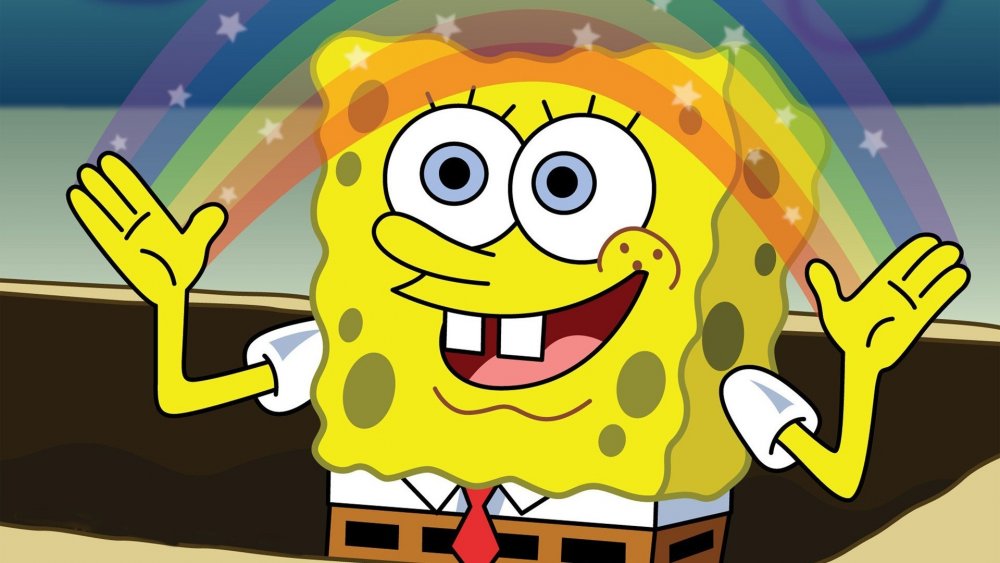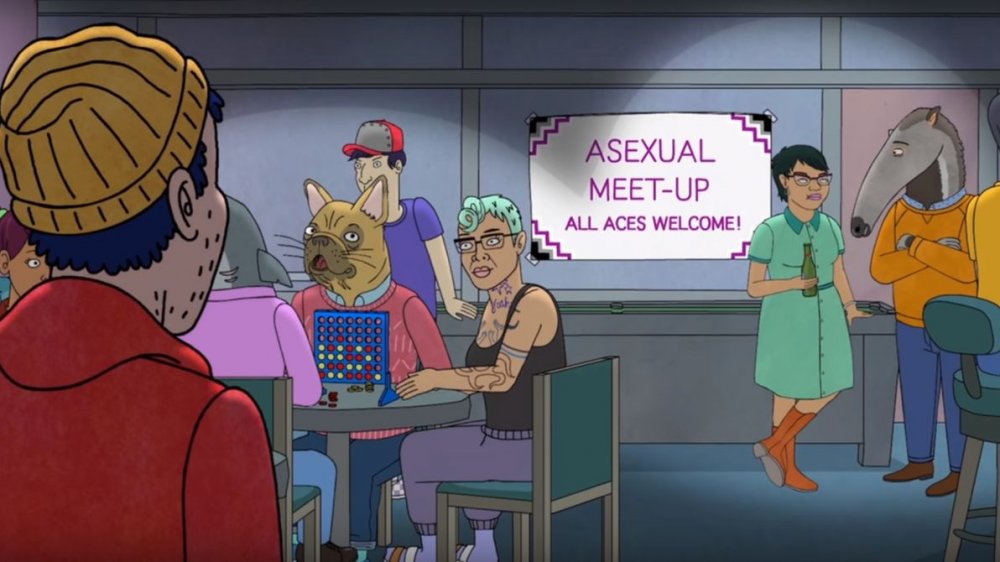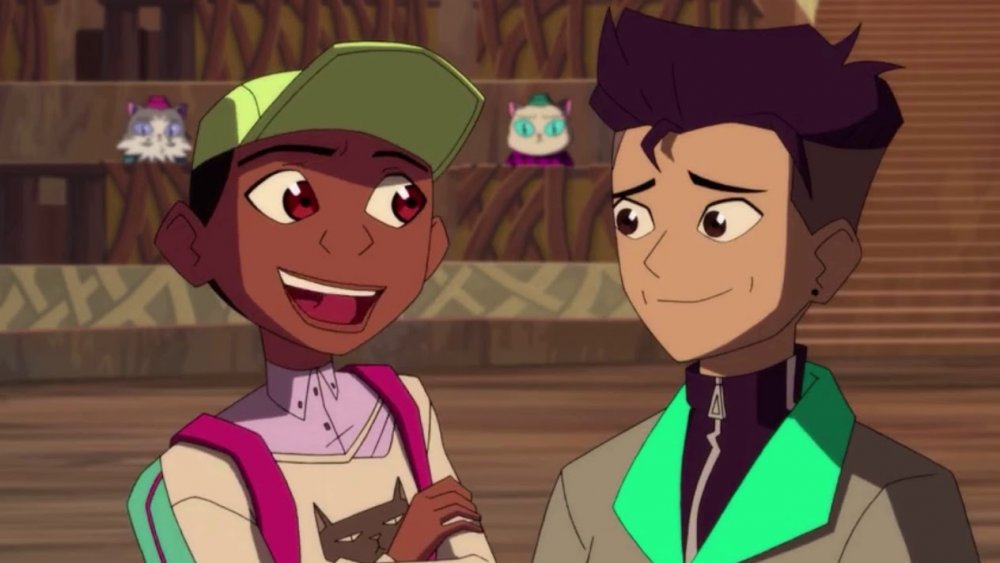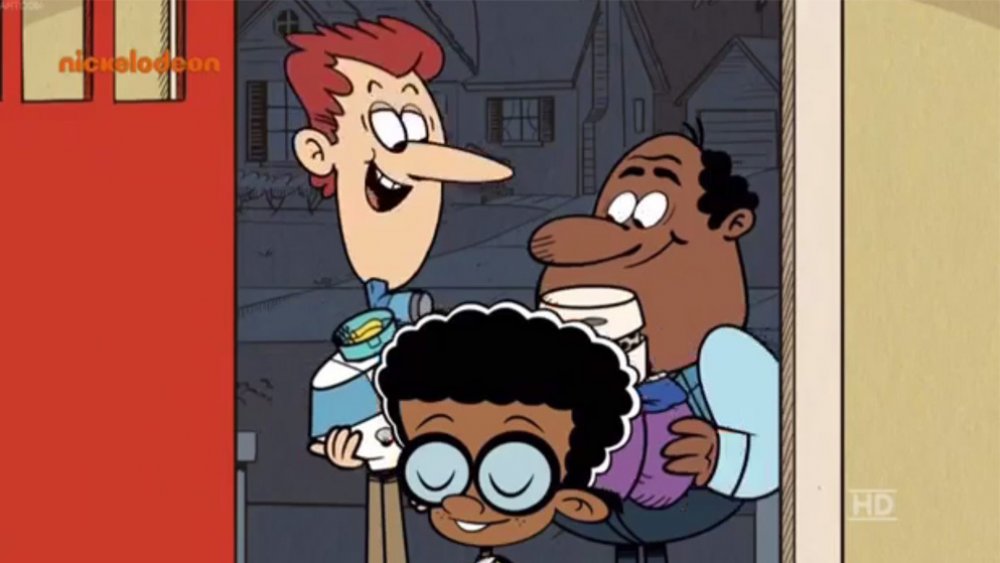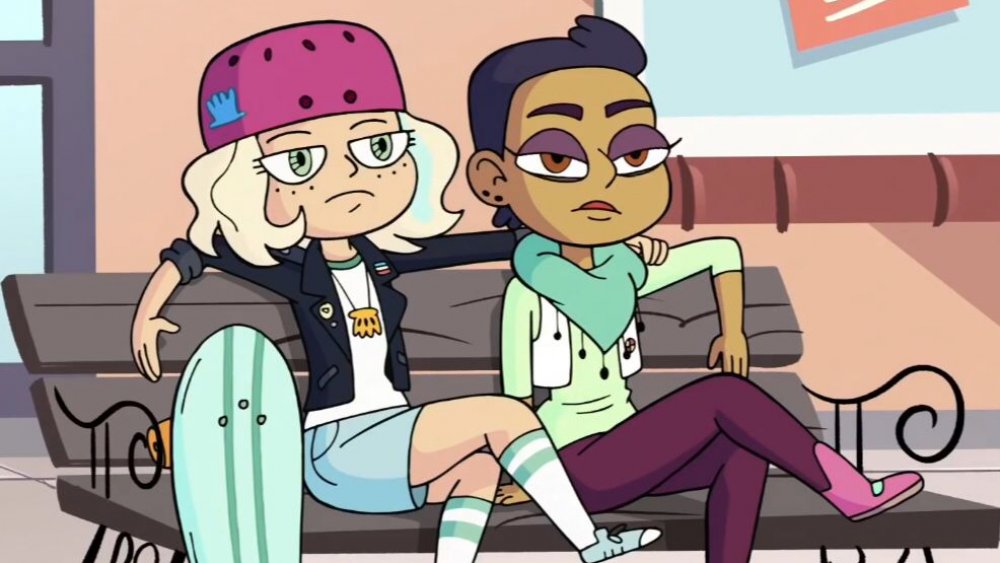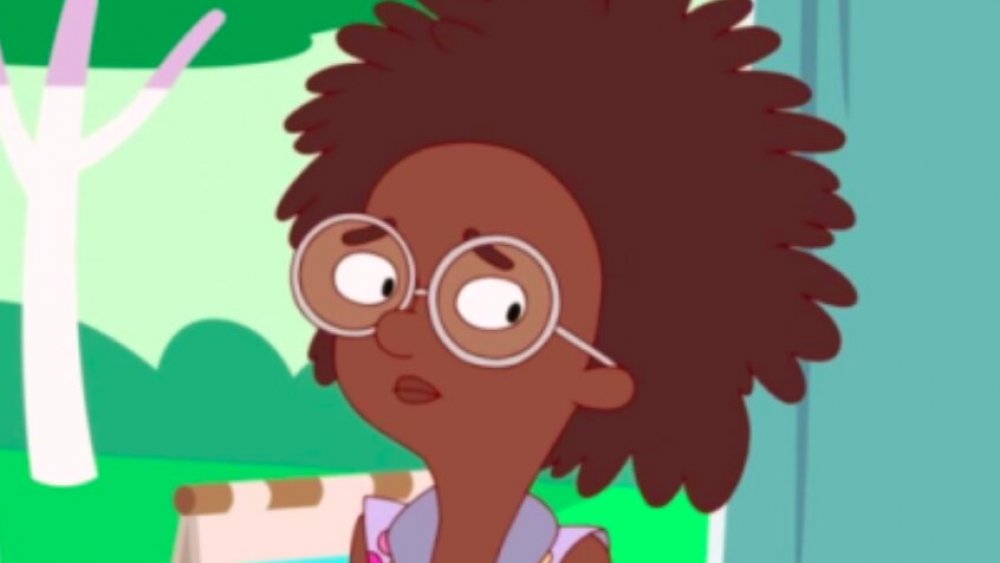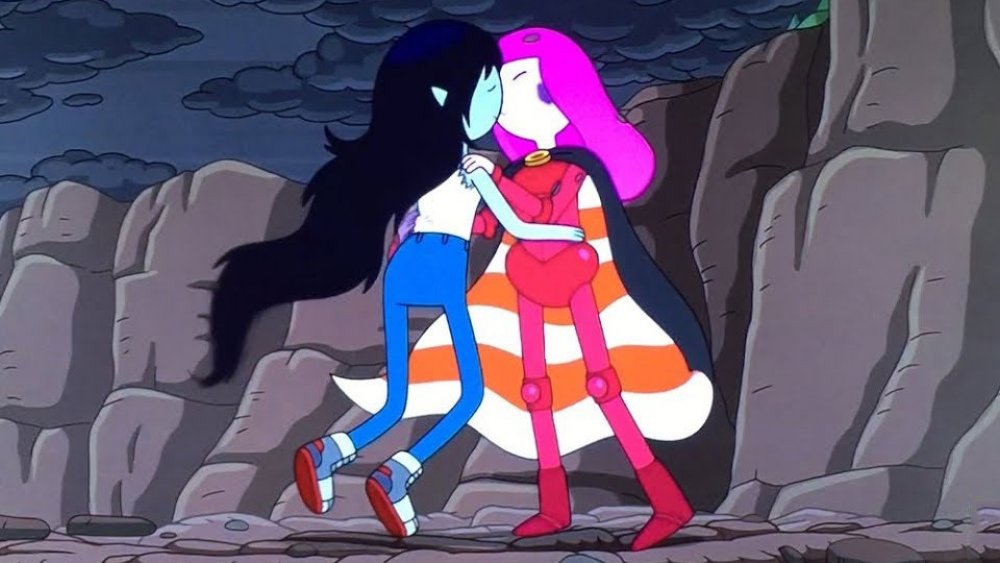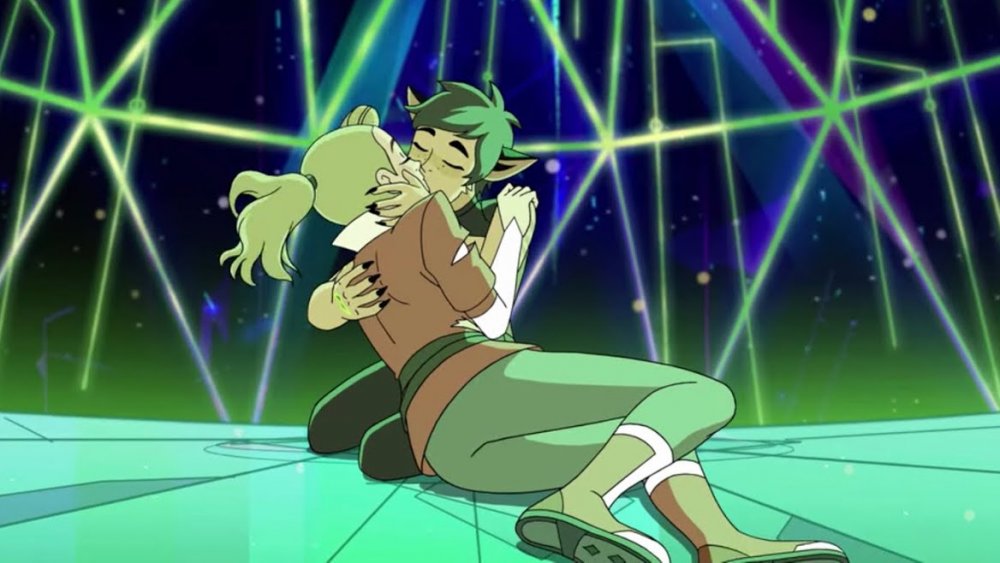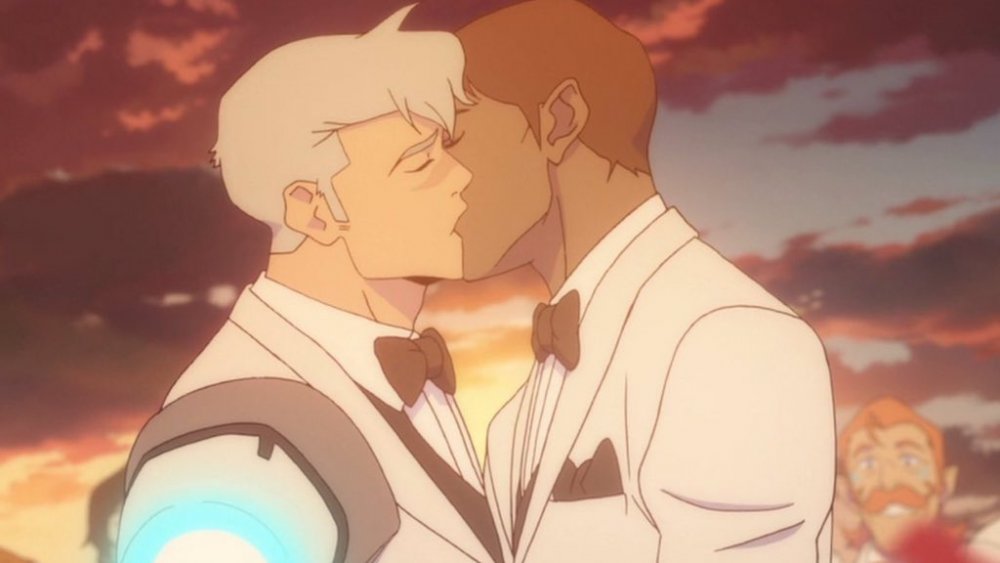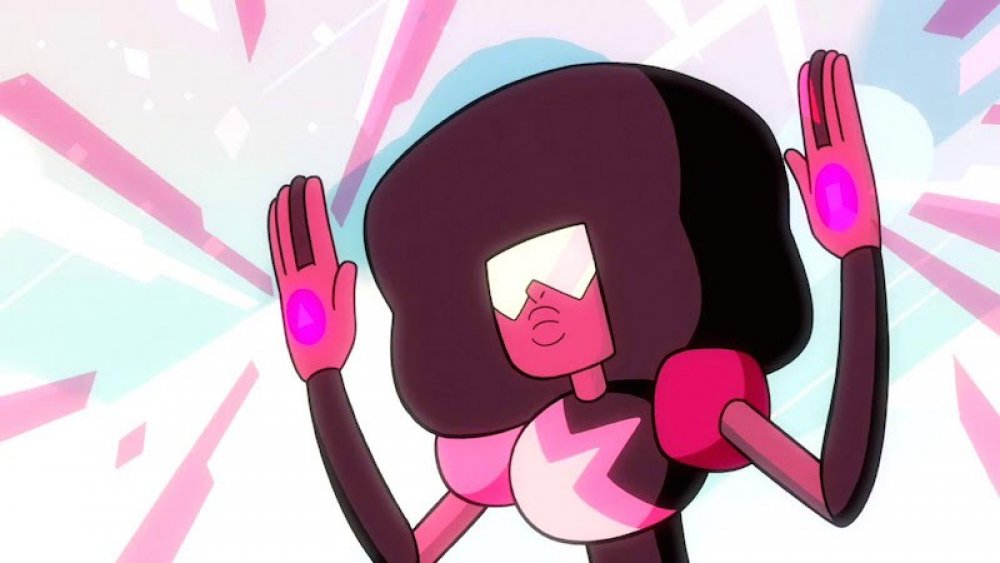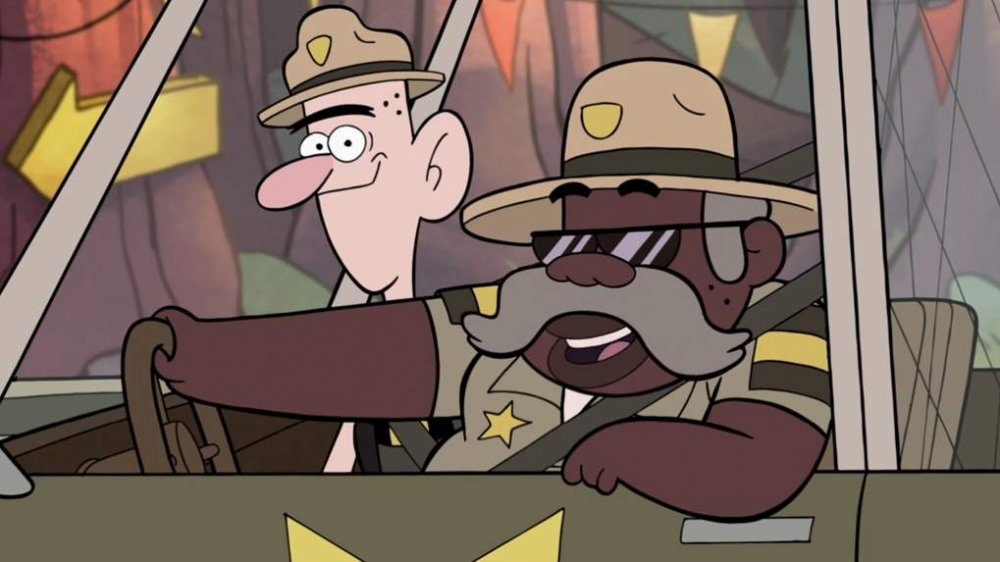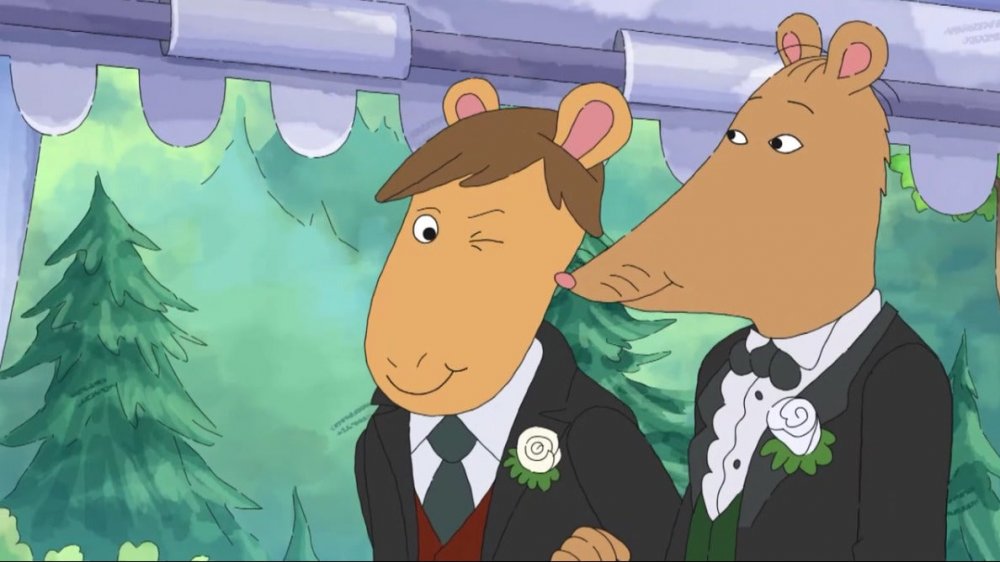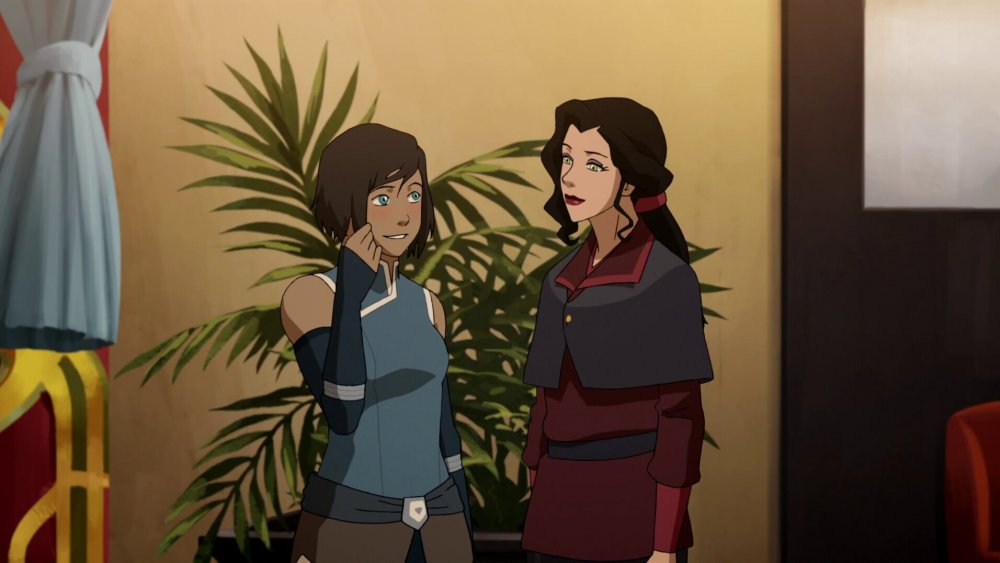Cartoon Characters Who Are Openly LGBTQ+
For a long time, LGBTQ+ representation in mainstream entertainment seemed like something of a fantasy. But things have gotten a whole lot more open in the last decade or so — even in the world of cartoons. Animation, in fact, has proven to be a great place to explore the panorama of sexuality and gender. And boy, do these animated series take full advantage of their medium. Anthropomorphic birds on BoJack Horseman, nigh-immortal aliens on Steven Universe, and candy-coated princesses on Adventure Time all fall under the LGBTQ+ umbrella nowadays. This is not to say that LGBTQ+ liberation is a fantasy – the struggle for equality is all too real. But animation is uniquely free of limits, and creators have used this openness to create safe havens of expression for all ages. Symbolism, magic, and fantasy are potent tools of representation in these cartoons, used to their fullest potential in these LGBTQ+ characters. From princesses to warriors, they're out and proud — and we're here to celebrate them.
Todd Chavez: Not nothing
BoJack Horseman's Todd Chavez is a fan favorite, beloved for his B-plot escapades that often end up just as compelling as the main storyline. Season four, however, sees him gain a serious story arc all his own. In "Hooray! Todd Episode!," Todd officially comes out as asexual and begins to embrace his identity. He does so hesitantly, waffling on whether or not he will skip his first meetup before finally deciding to show up. There, he learns that sexuality is a spectrum, even within asexuality.
This is a far cry from not even knowing there was a name for what he had been feeling — or not feeling — all along. Even after coming out, Todd discovers there's a lot of nuance to his experience. He realizes that he might want more emotional intimacy from his first asexual girlfriend than she can give, just as his high school girlfriend wanted more physical intimacy from him. At the end of season three, when said high school ex asks if he's gay, Todd is fairly certain he isn't ... but he doesn't think he's straight, either. "I don't know what I am," he muses. "Maybe I'm nothing." But to those in the asexual community who found comfort in his portrayal, Todd is the furthest thing from nothing.
Kipo and the Age of the Wonderbeasts celebrates honesty
Kipo and the Age of the Wonderbeasts boasts a truly adorable relationship in the one between Troy and Benson. These characters bond over their mutual love of hip-hop from the "old world" and of flapjacks. From the beginning, their affection for each other is obvious, enhanced by the series' entrancing animation and whimsical worldbuilding. When their adventures grow more, well, adventurous, that crush grows ever more serious — sometimes, they even find themselves holding hands.
This budding relationship is built on a firm foundation of representation. Benson's sexuality is made explicit in the season one episode "Ratland," in which Benson, in response to his (female) friend Kipo's crush on him, simply says, "I'm gay." This is not something we see often, especially in a children's show. There are no minced words or implications, just total honesty and acceptance. While coming out is often not nearly as casual as it is in this scene, it's admirable for an all-ages cartoon to show that you shouldn't have to explain or apologize — you can just be who you are, and expect your friends to have your back.
Loud and proud on The Loud House
Howard and Harold McBride of Nickelodeon's The Loud House broke major ground when they debuted in 2016. The couple are parents to Clyde McBride, one of the cartoon's main characters, and are generally portrayed as loving, goofy, and doting towards their son. Harold and Howard appear in multiple episodes on screen after their introduction, and are prominent in episodes such as "Attention Deficit" and "Baby Steps." "Howie" is the more high-strung and emotional of the two, as witnessed in an episode chronicling Clyde's younger days, while "Hare-Bear" is calm and cool. Both of them fit the description of a helicopter parent, which means that they not only act as foils to each other, but also to the more lenient Lincoln's parents. The depth of their relationships with various members of the cast, as well as each other, indicates that their presence is not an obligatory background nod — they are integral to this cartoon's universe.
Jackie and Chloe on Star vs. The Forces of Evil
Jackie and Chloe of Star Vs. The Forces of Evil are a same-sex couple, as confirmed by one of the show's writers. This writer, who wrote and storyboarded a scene between the two, also identifies as bisexual. Many emerging LGBTQ+ characters in the animated world have come into being through the courage and creativity of writers and artists who are a part of the community, and this pair is a great example. In the episode the writer references, "Britta's Tacos," the pair can be seen with their arms around each other and holding hands.
While there isn't an actual kiss between Chloe and Jackie, Star vs. The Forces of Evil did depict Disney's first same-sex kiss on screen. It doesn't occur between any main characters, but between a smattering of couples in the background at a concert. There were some initial theories among fans that Disney censored the episode due to complaints, as it appeared to have been removed from the lineup on the TV schedule and the website at the time. But in time it was restored, and fans have no doubt as to where the show's allegiances rest now.
Danger, eggs, and so much more
Milo is a non-binary character on Danger and Eggs who befriends the main characters. The show, created by Shadi Petosky, a trans woman, boasts a cast stacked with queer and trans actors. Milo is a great example, being voiced by agender model and activist Tyler Ford.
Danger and Eggs is a wholesome cartoon, full of childhood hijinks. Our heroes go on all sorts of adventures, ranging from taking games of hide-and-seek way too far to lamenting a newfound love for broccoli. These explorations take place largely within the confines of one neighborhood park — a scope kids in the audience instinctively understand. Similarly, Milo is presented with total honesty and simplicity, in a way children in the audience immediately grasp. There is no stumbling or awkwardness when Milo's new friends use their correct pronouns — it's natural and easy.
Throughout the series characters learn what it means to have and be a "chosen family." This theme is another facet of the show's embrace of LGBTQ+ identity: When LGBTQ+ youth cannot find love and acceptance in their biological families, they can find it in the family of their choosing. Normalizing and celebrating these relationships helps young people in Danger and Eggs flourish — just as it does in real life.
Adventure Time features a romance between a princess and a queen
Adventure Time explores serious themes in profoundly strange ways. Some characters, like BMO, are self-aware video game consoles. Some princesses, like Bubblegum, are scientists, while others, like Lumpy Space Princess, are arrogant teenagers. The show quietly shrugs off preconceived notions of all sorts — and that includes expectations of gender and sexuality.
Princess Bubblegum and Marceline the Vampire Queen are the most prominent example of this. The two have a complex relationship hinted at throughout the series, with literal centuries of history behind it. Rebecca Sugar, who would go on to break miles of ground in this regard as the creator of Steven Universe, was a big part of making the two a couple — and fans took notice. "Bubbline" became a popular couple with thousands of fans to its name. Finally, Bubblegum and Marceline confirm their love in the series finale, "Come Along With Me," when, after a climactic battle, they kiss. The two might be very different — Bubblegum is a ruler, a mad scientist, and a bit of a stickler for decorum, while Marceline is a laid-back rocker chick with a complex past. But when they're together, it just works.
She-Ra and the Princesses of Power ... who sometimes marry each other
She-Ra and the Princesses of Power boasts rich representation all across the LGBTQ+ spectrum. We're not talking about side characters, here — we're talking about literally dozens of characters who are either confirmed or strongly suspected of being LGBTQ+, including the titular heroine.
As the Los Angeles Times put it, She-Ra's "princesses are just as likely to be married to each other as they are to have boyfriends." The most prominent example is the relationship between Adora, the girl who transforms into She-Ra, and Catra, her childhood best friend. They might spend most of the series on opposite sides of a war, but they can't ignore the lingering feelings they have for each other. In the series finale, they finally admit they love each other, and share a kiss that literally saves the universe.
Beyond Adora and Catra, LGBTQ+ characters include Netossa and Spinnerella, a pair of married princesses who are among the most steadfast heroes in the series. Scorpia, who ends up with Perfuma, is a lesbian woman herself, raised by two moms. Jewelstar is a transgender man voiced by a trans actor, while Double Trouble is non-binary and voiced by a non-binary actor. She-Ra does nothing by halves, and that includes representation.
Voltron: Legendary Defender's hero breaks boundaries
Shiro, one of the main characters in Voltron: Legendary Defender, is at some point confirmed to be in a same-sex relationship back on Earth with a man named Adam. However, the episodes containing Adam only show him breaking up with Shiro and then being killed by aliens. Fans weren't happy, eventually spurring an apology from the showrunner.
Following this apology, Shiro does have another relationship with a character named Curtis — one that ends in marriage, seen in a montage at the end of the eighth season, depicting the lives of the characters. Despite this presumably happy ending, very little is known about the beginning and middle of this relationship. Curtis already existed as a character in the show, albeit one in the background, so there are lots of ways to imagine he and Shiro met — but all of them must be imagined. Fans will have to content themselves with knowing the relationship exists and ends in marriage, rather than seeing it take shape in the first place.
Garnet embodies love in Steven Universe
Garnet, one of the powerful Crystal Gems of Steven Universe, is LGBTQ+ representation of a unique sort: She is a lesbian relationship. Garnet is a fusion, a unique sort of Gem born of a bond between other Gems, the alien race the series centers around. She is the result of the bond between Ruby and Sapphire, who are so close, they prefer to live as one being most of the time. When they do split, it's often because of emotional turmoil — or, as seen later on in the series, to teach something one of them excels at. In the end, they cement their bond the human way as well, having a big, glitzy wedding organized by Steven himself.
Garnet isn't the only LGBTQ+ character on the show, however. Stevonnie, the fusion of Steven and his best friend (and eventual girlfriend) Connie, is canonically non-binary. Pearl, another member of the Crystal Gems, is revealed to have been in love with Rose Quartz, Steven's late mother. Losing Rose was a terrible blow for Pearl, one she must tackle head-on throughout the series. Though she does, in the end, move on, she does retain her weakness for tall women with pink hair.
Partners in crime-stopping and love in Gravity Falls
Gravity Falls creator Alex Hirsch made multiple attempts to include LGBTQ+ relationships in his show. It wasn't always easy: Early in the series, there is a scene in which the Cupid-esque Love God spreads love all over town. People fall for each other left and right, including one pair of old women. Immediately, the network sent a note back that two women in love was not appropriate for their audience.
Hirsch responded simply: "Why?" The contention only grew from there, until the network issued an ultimatum, saying that he could change the scene or they would cut the episode. Hirsch's insistence did give them a run for their money, and perhaps cleared some of the barriers to another couple the show features later on: Sheriff Blubs and Deputy Durland. After the world almost ends, these two, who have already been seen in various romantic settings and have extremely suggestive dialogue, finally declare to the world that they're "mad with power ... and love!" At the end of the world, love really is the only thing that matters.
Teachers have lives outside of school -- and heteronormativity
When it debuted in 1996, the creators of Arthur probably didn't expect the show would one day depict a same-sex marriage. With 23 seasons, however, the show has gotten the chance to grow and change alongside the culture that surrounds it. This is made clear when Mr. Ratburn, Arthur's teacher, marries his husband in season 22.
The set-up for the reveal of this marriage calls out outdated expectations by dropping a hint that Mr. Ratburn's future spouse is named "Patty." Naturally, the students assume it's a woman, and they set out to investigate. When they see Mr. Ratburn with a woman named Patty who calls him "soft" and threatens to toughen him up (he's already their toughest teacher), they resolve to break up the presumed pair. They don't believe she would be good for him — or them!
In one of their breakup plots, they meet a chocolate shop owner, Patrick, who is quite kind and gives them free samples. Later at the wedding, they discover that Patty is actually Mr. Ratburn's sister, and it is Patrick, the chocolate shop owner, who marries Mr. Ratburn. Their only reaction is to be pleased that their teacher is marrying someone so friendly and nice. Love, as it should be, is the order of the day here.
Korra and Asami become legendary
Like its predecessor Avatar: The Last Airbender, The Legend of Korra received critical acclaim for tackling themes far beyond the scope of most animated series. Korra explores PTSD, fascism, technological disruption of society, and more — and does it all through the eyes of its brown-skinned female protagonist. In the finale, we learn that she is also bisexual: Korra and Asami Sato end the series by holding hands and gazing into each other's eyes, in a direct parallel to the romantic final scene of Avatar: The Last Airbender.
Korra and Asami's relationship came as a surprise to fans, but upon rewatch, its development is obvious. The two start out in a love triangle, both vying for the affections of Mako. In this case, however, the girls get the girl — each other! After their rocky beginning, the two become friends, to the point that Asami becomes Korra's most important confidant. Korra's biggest struggle as the Avatar and as a person is with accepting support and opening herself up to vulnerability: Asami proves to be her number-one support in this regard. Nickelodeon, while supportive of this relationship, prescribed limitations preventing a kiss between Korra and Asami as they embarked on their Spirit World vacation. But it's safe to say, and confirmed by the comics, that the Spirit World has no such rules.
